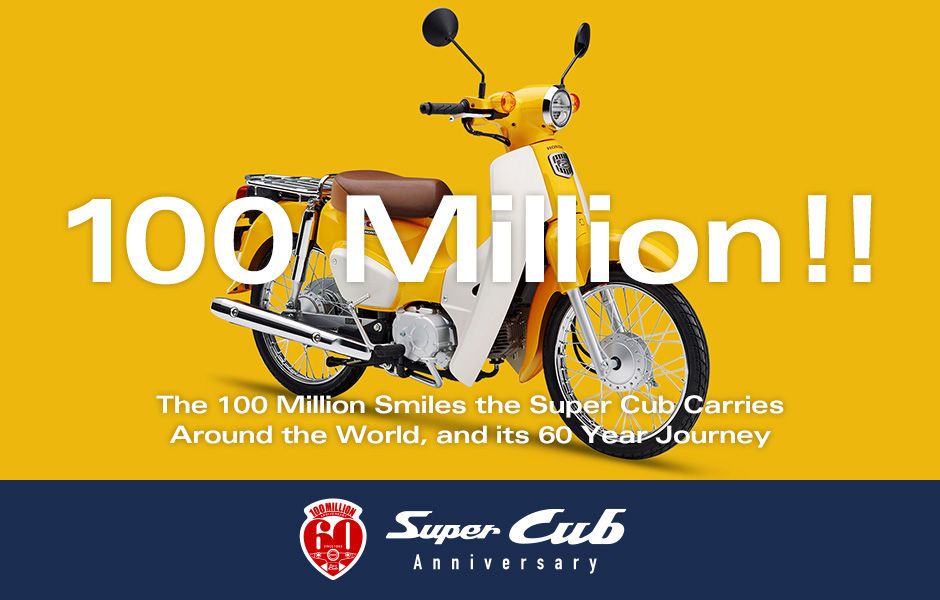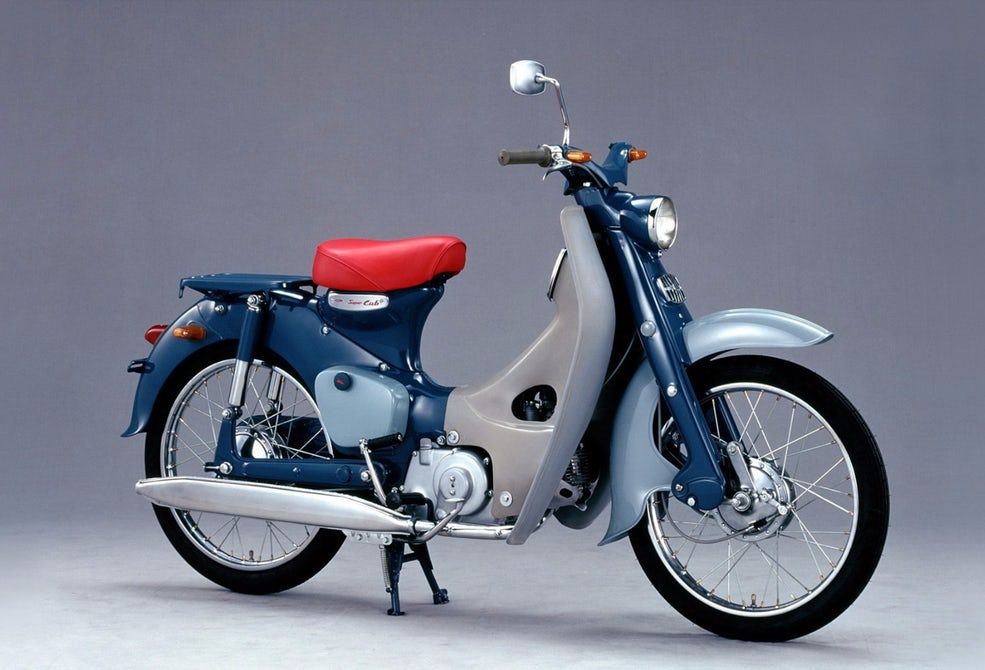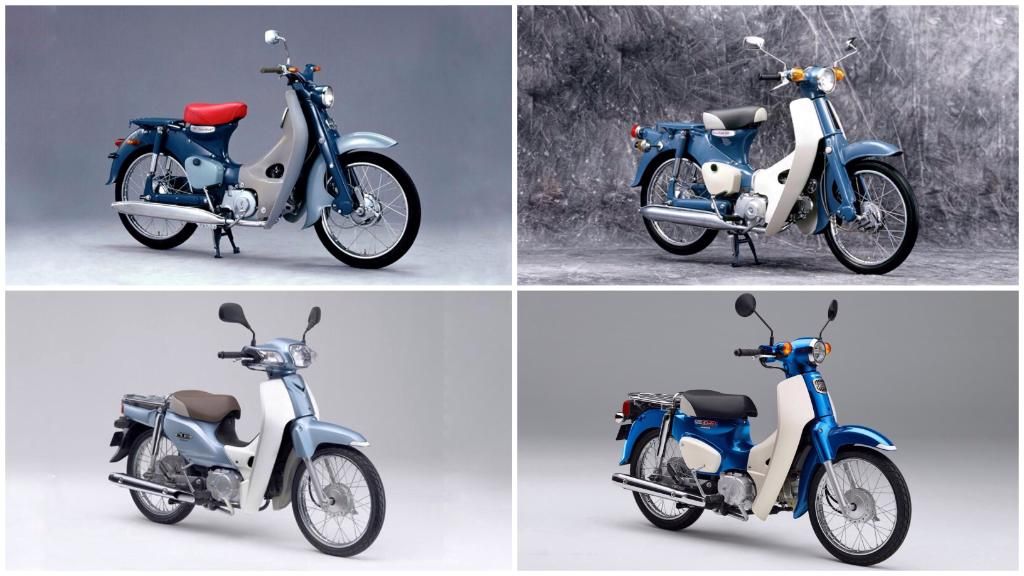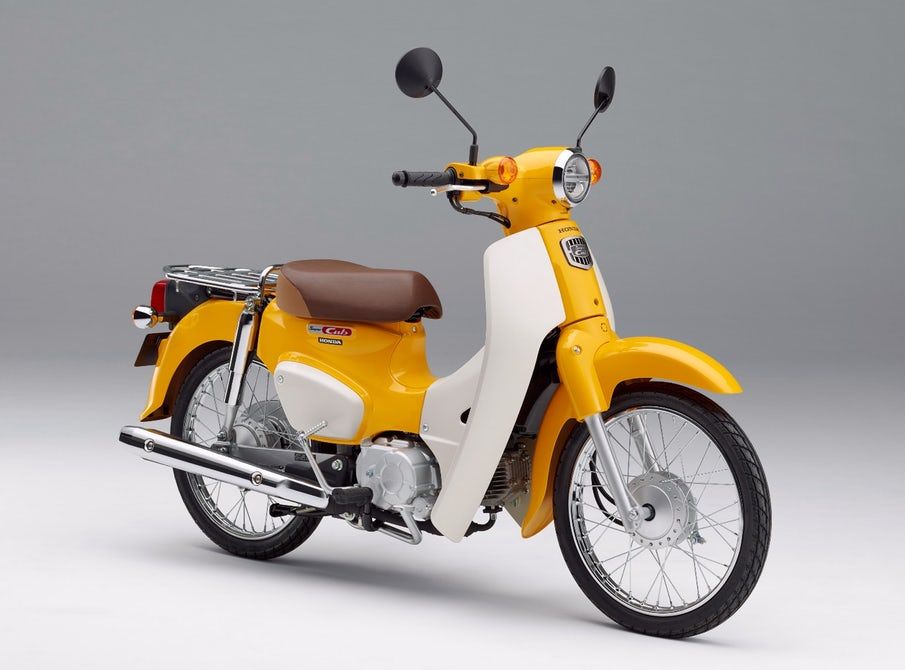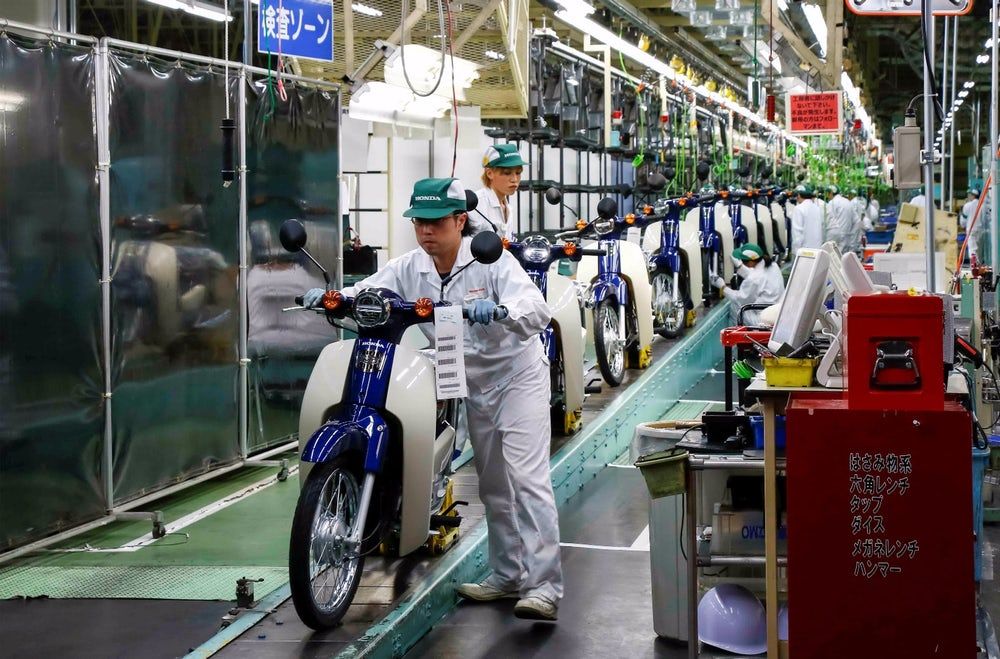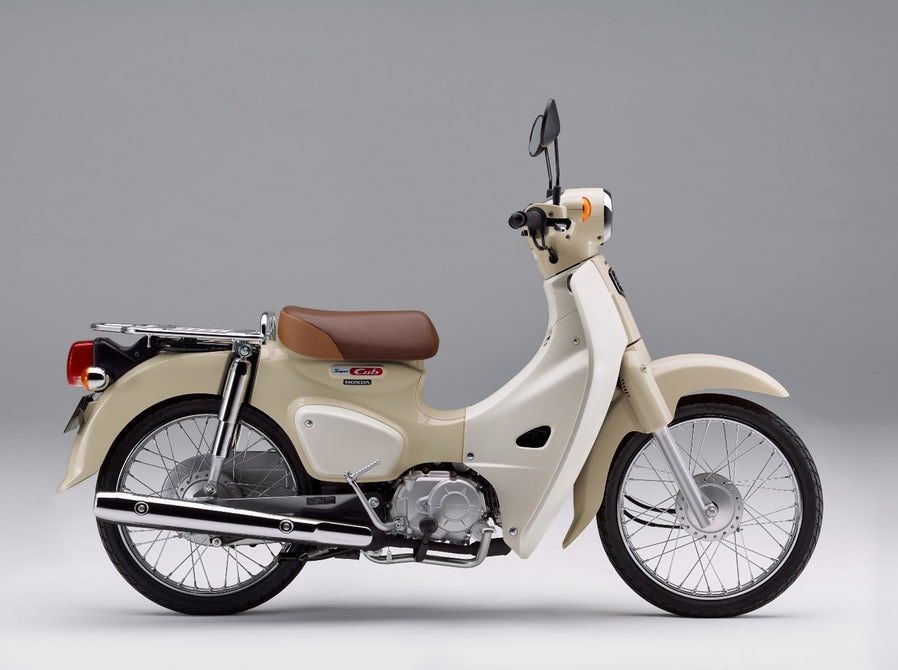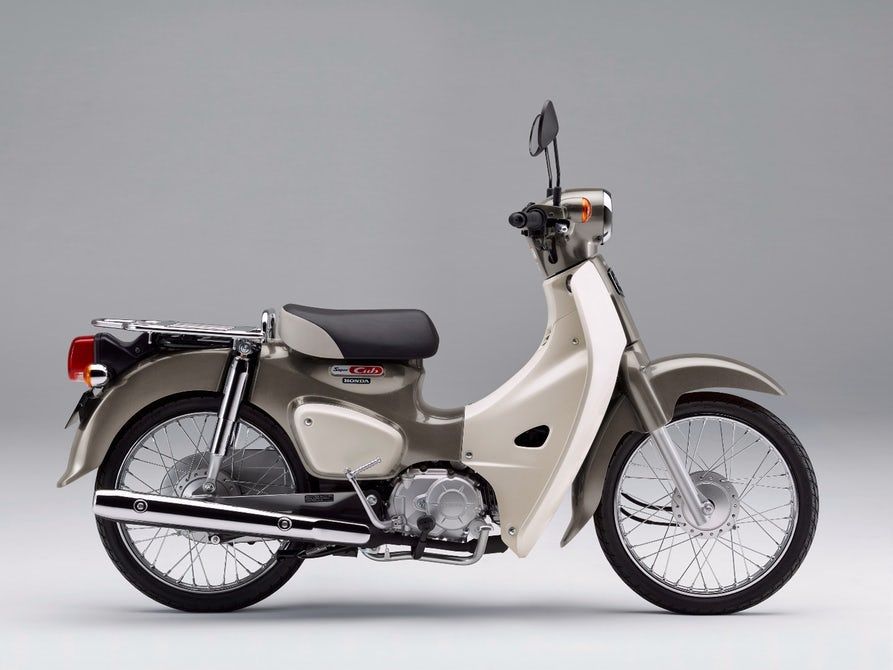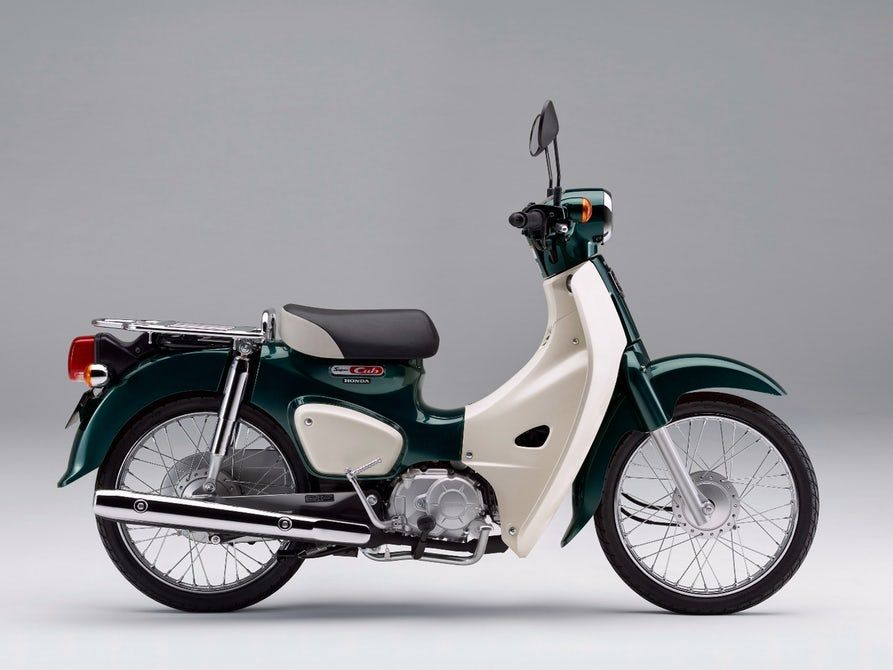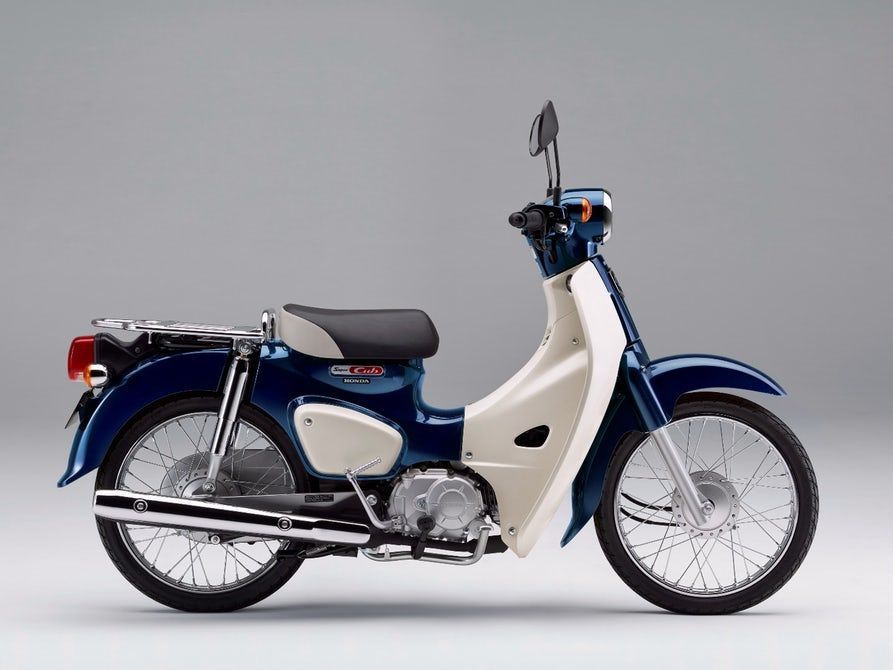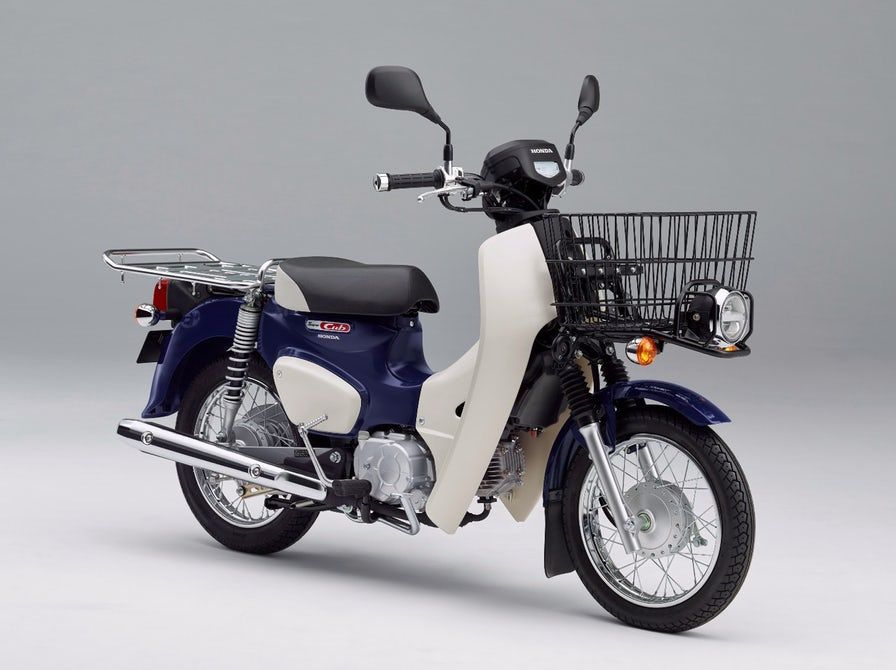Serving 100 million happy customers is a well-achieved milestone for any business, and no other manufacturer but Honda could have made it seem this easy. Being the first two-wheeler to cross such a mark is the Japanese Red Wing's Super Cub that began its life way back in 1958.
Now, the moped is being made at 16 plants spread across 15 countries around the world that serves customers in more than 160 countries. That is some mind-boggling numbers considering the popularity and logistics involved with the Super Cub.
|
1958 Honda Super Cub |
One of those factories in Japan held a commemorative ceremony to celebrate this feat with Mr. Ikuo Kabashima, Governor of Kumamoto Prefecture, guests and representatives from local municipalities and suppliers, as well as Honda executives and associates, including President and CEO Takahiro Hachigo.
You’ll be surprised to know that the Super Cub was initially idealized in 1956 after the then Honda President Soichiro Honda and managing director Takeo Fujisawa traveled to Europe in search of hints to what their next major product should be.
|
Evolution of the Honda Super Cub |
After a million strategies, sittings and talks with every department in the company, Honda decided to make a small scooter having a high-powered 4-stroke engine that gave both power and efficiency along with being the quietest. The scooter also had to be built around a new chassis and bodywork design which will facilitate even women riders to easily get on and off, and ride. With that, a new clutchless design had to be fabricated for a hassle-free smooth operation.
What came out was a scooter that revolutionized the way common folks commuted. With both men and women accessing the pleasures of swift and easy riding around towns, the Super Cub started to become a household name and commodity wherever it was sold. No wonder it became the most produced motor vehicle in history.
|
2017 Honda Super Cub |
Over the year, the Japanese fine-tuned the Super Cub to evolve with the generations, and yet the basic concept has remained unchanged since the introduction of the first-generation, and its original style has been carried forward even to current models. This iconic design even managed to become the first one ever to obtain a three-dimensional trademark registration in Japan.
Now for 2017, Honda has given the Super Cub its brand new update and brings back the round design, feature LED lights for the first time in the Super Cub series. Mashing advanced technologies with traditional Super Cub styling, Honda has not forgotten to look back at their past to go forward.
The 2017 model line-up consists of the Super Cub 50, Super Cub 110, Super Cub 50 Pro and Super Cub 110 Pro all of which have been revamped. They get fresh color options, modern fuel injected single-cylinder 49cc engine making 3.7 hp and 110 cc unit with 8 hp.
The new Honda Super Cub will be showcased at the Tokyo Motor Show, and a new generation Cross Cub is also expected to be unveiled at Tokyo next week along with an electric version called the EV-Cub. As a matter of fact, 2018 bears a distinct significance for the Super Cub, marking its 60th anniversary, and Honda will honor the same at Tokyo.
|
2017 Honda Super Cub in fresh new color options |
President, CEO of Honda Motor Co., Ltd Takahiro Hachigo stated on this occasion: “Honda Super Cub, which was created in Japan, fulfills the expectations of our customers and embodies Honda’s passion to serve people worldwide with the joy of expanding their life’s potential. As a result, the Super Cub series has long been enjoyed by customers all over the world and was able to reach the 100 million-unit milestone in worldwide cumulative production. Honda will continue to evolve in keeping with changes of the times and strive to offer products that go beyond the expectations of our customers.”
|
2017 Honda Super Cub 110 Pro |
Key milestones of Honda Super Cub Series
|
August 1958 |
Sales of Super Cub C100 began (air-cooled 4-stroke, single-cylinder OHV engine, 49cc, 4.5 horsepower) |
|
1959 |
Exports to the U.S. began |
|
1960 |
Production at Suzuka Factory began |
|
1961 |
Cumulative global production of the Super Cub series reached 1 million-unit milestone |
|
1964 |
Sales of Super Cub C65 (the first OHC engine) began |
|
1966 |
Sales of Super Cub C50 (OHC engine) began |
|
1974 |
Cumulative global production of Super Cub series reached 10 million-unit milestone |
|
1983 |
Sales of Super Cub 50 Super Custom began. Fuel consumption of 180km/liter (30km/h constant-speed test value) achieved |
|
1988 |
Sales of Press Cub began |
|
1991 |
Production transferred to Kumamoto Factory |
|
1992 |
Cumulative global production of Super Cub series reached 20 million-unit milestone |
|
1997 |
Sales of Little Cub began |
|
2005 |
Cumulative global production of Super Cub series reached 50 million-unit milestone |
|
2007 |
An electronically-controlled fuel injection system, Honda’s PGM-FI, was installed on. Super Cub 50, Press Cub 50 and Little Cub |
|
2008 |
Cumulative global production of Super Cub series reached 60 million-unit milestone. The 50th anniversary of Super Cub sales |
|
2009 |
Sales of Super Cub 110 and Super Cub 110 Pro began |
|
2012 |
Super Cub 110 and Super Cub 50 underwent full model change |
|
2013 |
Sales of Cross Cub began |
|
2014 |
Shape of Super Cub became the first vehicle to obtain three-dimensional trademark registration in Japan. Cumulative global motorcycle production of Honda reached 300 million-unit milestone |
|
2017 |
Super Cub 50, Super Cub 110, Super Cub 50 Pro, Super Cub 110 Pro underwent model change |

